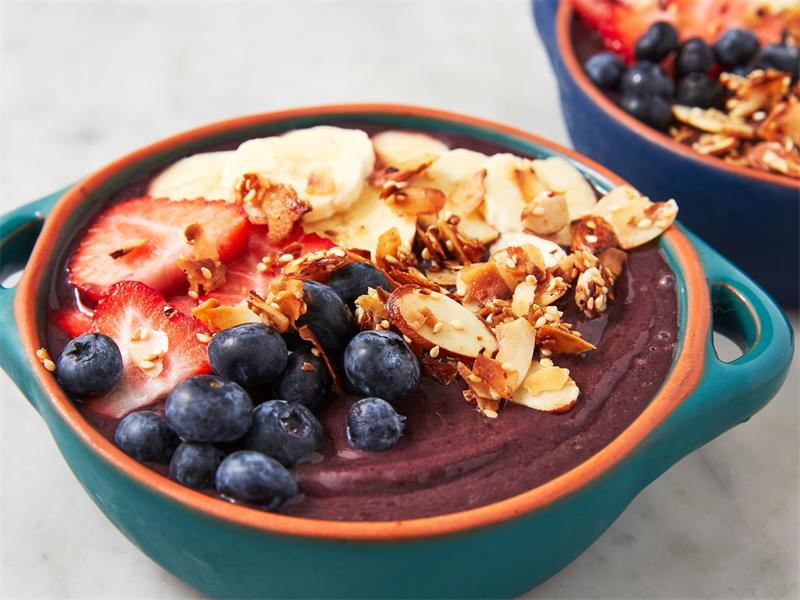Contents
Introduction
Are you looking for an effective way to enhance your fitness routine? If so, yoga is an excellent option to consider.
Not only does yoga improve flexibility and balance, but it also has numerous benefits for cardiovascular health, mental well-being, and stress management. One of the key advantages of incorporating yoga into your fitness regimen is that it can help you develop greater mind-body awareness.
Yoga is all about connecting breath with movement, focusing on the present moment, and cultivating a sense of inner calm. By practicing yoga regularly, you can become more attuned to the signals your body sends you during exercise – allowing you to adjust your movements accordingly in order to prevent injury or discomfort.
Another benefit of adding yoga to your routine is that it can help reduce cortisol levels in the body. Cortisol is known as the “stress hormone,” and high levels of cortisol have been linked with numerous negative health outcomes such as increased inflammation and risk for chronic diseases like heart disease and diabetes.
By practicing yoga regularly – especially restorative poses that focus on relaxation – you can help lower cortisol levels in the body and promote overall wellness. Research has shown that practicing yoga can lead to improved sleep quality – an essential component of any successful fitness routine.
Sleep plays a critical role in muscle recovery, immune function, and energy levels; by incorporating yoga into your daily routine and promoting better sleep hygiene habits like winding down before bed or establishing a consistent bedtime schedule – you may find yourself feeling more energized throughout the day. In short: there are many compelling reasons why yoga could be just what you need to take your fitness routine to new heights!
Finding the Right Yoga Style for You
Overview of different yoga styles and their benefits
Yoga is so much more than just stretching and relaxation. There are numerous styles of yoga, each with unique benefits that cater to different goals and preferences. Some popular styles include Hatha, Vinyasa, Bikram, Ashtanga, and Restorative.
Hatha is a gentle style that focuses on basic postures. It’s a great choice for beginners or those looking for a slower-paced practice.
Vinyasa, on the other hand, is more energetic and involves flowing sequences that sync movement with breath. It’s great for those looking to get their heart rate up while still getting the benefits of yoga.
Bikram yoga takes place in a hot room and consists of a set sequence of 26 poses. This style is known for its detoxifying properties and can be challenging but rewarding.
Ashtanga is another physically demanding style that involves moving through a specific series of poses in a set order. Restorative yoga is all about relaxation and rejuvenation through gentle stretches held for longer periods of time.
Tips for choosing a style that aligns with your fitness goals and preferences
When choosing the right yoga style for you, it’s important to consider your fitness goals as well as your personal preferences. Do you want to build strength? Improve flexibility?
Reduce stress? If you’re not sure where to start or what your goals are yet – no problem!
Try out different classes at your local studio or gym to get a feel for what you enjoy most. If you’re hoping to gain strength or improve endurance, Vinyasa or Ashtanga may be good choices since they tend to be more physically challenging.
If relaxation is your top priority, Restorative might be the way to go. It’s also worth considering any physical limitations or injuries you may have.
If you have any concerns, talk to your doctor or a yoga teacher before starting a new practice. They can offer advice and modifications to help keep you safe during your practice.
Incorporating Yoga into Your Workout Schedule
Strategies for adding yoga to your existing workout routine
If you’re already committed to a workout routine, adding yoga might seem daunting. However, it’s easier than you think!
One way to incorporate yoga into your existing routine is to use it as a warm-up or cool-down. Before or after your regular workout, take 10-15 minutes to do some yoga poses that complement the muscles you’re working on that day.
For example, if you’re doing leg day at the gym, incorporate some stretches like downward-facing dog and pigeon pose. Another option is to swap out one of your regular workouts for a full yoga session once a week.
This can give you the benefits of both strength training and flexibility without sacrificing any time. Plus, it’s a great way to challenge yourself in new ways and keep things fresh.
Suggestions for finding time to practice yoga amidst a busy schedule
Finding time for anything can be tough when you have a packed schedule. But with some planning and creativity, anyone can make room for yoga in their lives. One way to do this is by waking up 10-15 minutes earlier each morning and using that time for some gentle stretches or meditation.
Another option is to multitask during the day – try practicing poses while watching TV or listening to music in the evenings. This can make your downtime more productive while also allowing you to relax.
Consider finding local classes that work with your schedule so that you have dedicated times each week when you know you’ll be practicing yoga. With these strategies in mind, there are plenty of ways even busy individuals can find time for yoga in their schedules and benefit from its physical and mental benefits.
Essential Yoga Poses for Fitness Enthusiasts
Improving Strength, Flexibility, and Balance through Yoga
If you are a fitness enthusiast, incorporating yoga into your workout routine can greatly enhance your overall physical performance. Certain yoga poses can help improve strength, flexibility, and balance which translates into better performance in other types of exercise such as weightlifting or running. Here are some essential yoga poses for fitness enthusiasts:
1. Downward Facing Dog: This pose targets the hamstrings, calves, and shoulders while also lengthening the spine.
Begin on all fours with hands shoulder-width apart and knees hip-width apart. Lift your hips up towards the ceiling while straightening your legs and pressing your heels towards the ground.
2. Warrior II: Warrior II strengthens the legs and glutes while also improving balance.
Start in a lunge position with your front knee bent at 90 degrees and your back leg straightened out behind you. Open up your arms to both sides of the room as you gaze over your front hand.
3. Triangle Pose: The triangle pose is great for stretching out tight hamstrings while also strengthening the thighs, core muscles, and back muscles.
Begin standing with feet hip-width apart then step one foot back about three feet behind you with toes pointing slightly outward. Reach one hand towards the floor or ankle as you raise the other arm towards to ceiling.
Different Modifications for Different Fitness Levels
It’s important to remember that not everyone will be able to do every yoga pose right away – that’s okay! There are plenty of modifications available so that everyone can benefit from practicing yoga no matter where they are starting from physically.
For example, if you’re a beginner or have limited flexibility/ mobility due to injury or age-related concerns – consider using blocks or straps until you can comfortably reach the floor when bending over. Another modification is to bend the knees in poses like downward dog or plank poses to take pressure off of the hamstrings.
If you are looking for more advanced variations, try adding in a balance component to basic poses such as tree pose or warrior III. You can also use yoga blocks or straps to deepen certain stretches and improve flexibility.
Benefits of Incorporating Yoga Poses into Your Fitness Routine
Incorporating yoga into your fitness routine not only improves physical performance but also has mental and emotional benefits. Yoga is known for reducing stress levels, improving concentration, and increasing body awareness.
By incorporating yoga into your fitness routine, you’ll be able to gain these benefits while also improving overall athletic performance. So next time you’re at the gym or working out at home, consider adding in some yoga poses – it just might make all the difference!
Advanced Yoga Poses to Challenge Your Fitness Level
The Power of Advanced Poses
If you’re a fitness enthusiast who loves a challenge, incorporating advanced yoga poses into your routine can be an excellent way to challenge yourself and take your fitness to the next level. Advanced yoga poses require strength, balance, flexibility, and concentration – all qualities that play a significant role in overall fitness. By practicing these challenging poses, you can enhance your physical abilities and grow mentally as well.
Challenging Poses for Your Practice
Some of the most popular advanced yoga poses include Bird of Paradise, Firefly Pose, and Scorpion Pose. Bird of Paradise is an intense standing pose that involves balancing on one leg while extending the other leg out in front of you. Firefly Pose requires significant arm strength as you lift your legs off the ground while balancing on your hands.
Scorpion Pose challenges both flexibility and balance as you bring your feet up over your head while balancing on your forearms. However, it’s essential to remember that advanced poses shouldn’t be attempted without proper preparation or supervision.
Practicing these challenging poses too soon or without proper guidance can lead to injury. It’s crucial to work with a qualified instructor who can help guide you through each pose step by step until you feel comfortable attempting them on your own.
Precautions for Safe Practice
When attempting advanced yoga poses, it’s essential to take precautions to avoid injury. Always warm up thoroughly before trying any advanced pose so that your muscles are ready for the challenge.
Take time to stretch out any tight spots beforehand too. It’s also crucial not to push yourself too hard when trying new things; listen carefully to your body’s signals about what feels right and what doesn’t.
Even if an instructor is encouraging you to go further than feels safe for you personally, remember that it’s ultimately up to you to decide how far you want to go. Advanced yoga poses can be an incredibly rewarding addition to your fitness routine.
However, it’s vital to approach them with caution and respect for your body’s limitations and capabilities. With proper guidance and a willingness to challenge yourself safely, you’ll find that advanced yoga poses can help take your fitness practice to new heights.
Combining Yoga with Other Forms of Exercise
Ideas for integrating yoga into other workouts such as running, weightlifting, or cycling
If you’re an avid runner, cyclist, or weightlifter, you might be wondering how to incorporate yoga into your existing workout routine. The good news is that yoga can be a great complement to these forms of exercise. For example, doing a 10-15 minute yoga sequence before a run can help warm up the body and prevent injury.
Incorporating yoga into your weightlifting routine can also help improve flexibility and mobility, which in turn can enhance your weightlifting performance. One way to integrate yoga into other forms of exercise is by using it as a warm-up or cool-down activity.
Before going for a run or lifting weights at the gym, try doing some gentle yoga stretches to prepare your body for the upcoming workout. Afterward, use some relaxing yoga poses as a way to cool down and stretch out any tight muscles.
Benefits of cross-training with yoga
Cross-training with yoga has numerous benefits that can enhance both physical and mental health. For one thing, practicing different types of exercises on different days can prevent burnout and reduce the risk of injury from repetitive motion. Cross-training also helps build muscle in different areas of the body while improving overall flexibility and balance.
Yoga specifically offers unique benefits such as increased mindfulness and stress reduction that can have positive effects on overall health. In addition, practicing yoga has been shown to improve sleep quality which in turn aids recovery after workouts.
Another benefit of cross-training with yoga is that it allows you to mix up your routine and challenge yourself in new ways. Trying new poses or sequences can be a fun way to switch things up while still getting an effective workout.
Mindfulness in Yoga Practice
The Importance of Mindfulness in Both Yoga and Fitness Routines
For many people, fitness is all about getting the most out of their bodies – pushing themselves to lift heavier weights, run faster, or burn more calories. While this approach can be effective for building strength and endurance, it can also be counterproductive if we don’t take the time to listen to our bodies and prioritize self-care.
That’s where mindfulness comes in. Mindfulness is the practice of being fully present and engaged with the current moment, without judgment or distraction.
When we apply this mindset to our yoga practice (or any form of exercise), we become more aware of our body’s needs and limitations. We learn to focus on our breath, tune in to sensations in our muscles and joints, and make adjustments as needed to avoid injury or overexertion.
By cultivating mindfulness in our fitness routines, we also gain a deeper appreciation for the connection between our physical health and mental well-being. We become less concerned with external goals (like burning calories or building muscle) and more attuned to how different movements make us feel – physically, emotionally, and spiritually.
Techniques for Incorporating Mindfulness into Your Practice
If you’re new to mindfulness or struggle with staying present during your yoga practice, here are a few techniques you can try: – Focus on your breath: Use your breath as an anchor point for your attention throughout your practice.
Slow down your inhales and exhales, and notice how they feel moving through your body. – Scan your body: Take a few moments at the beginning of your practice (or at any point when you need to re-center) to scan through each part of your body from head to toe.
Notice any areas that feel tight or tense. – Set an intention: Before you begin each class or practice, set an intention for what you want to achieve.
This can be something physical (like mastering a new pose) or more emotional/spiritual (like cultivating gratitude or compassion). Remember that mindfulness is a practice – it’s not something that comes naturally to most of us.
Be patient with yourself and keep experimenting with different techniques until you find what works best for you. Over time, you’ll notice the benefits of mindfulness both on and off the mat.
Conclusion
Incorporating yoga into your fitness routine can have numerous benefits for both your physical and mental health. By finding the right yoga style for you and integrating it into your workout schedule, you can improve strength, flexibility, balance, and overall well-being. When choosing a yoga style, consider your fitness goals and preferences.
If you want a more intense workout, try Bikram or Power Yoga. For stress relief and relaxation, Yin or Restorative Yoga may be a better fit.
Remember to start slow and listen to your body as you begin incorporating yoga into your routine. Integrating yoga with other forms of exercise can also enhance the benefits of both activities.
Consider adding yoga poses before or after weightlifting workouts or practicing mindfulness while running to get the most out of this combination. Remember that mindfulness is an important aspect of yoga practice.
By being present at the moment during each pose and focusing on your breath, you can cultivate a sense of calmness and inner peace that will carry over into all aspects of your life. Overall, incorporating yoga into your fitness routine is an excellent way to improve both physical health and mental well-being.
So why not give it a try? Roll out your mat today and see for yourself how this ancient practice can benefit modern-day fitness enthusiasts like you!













